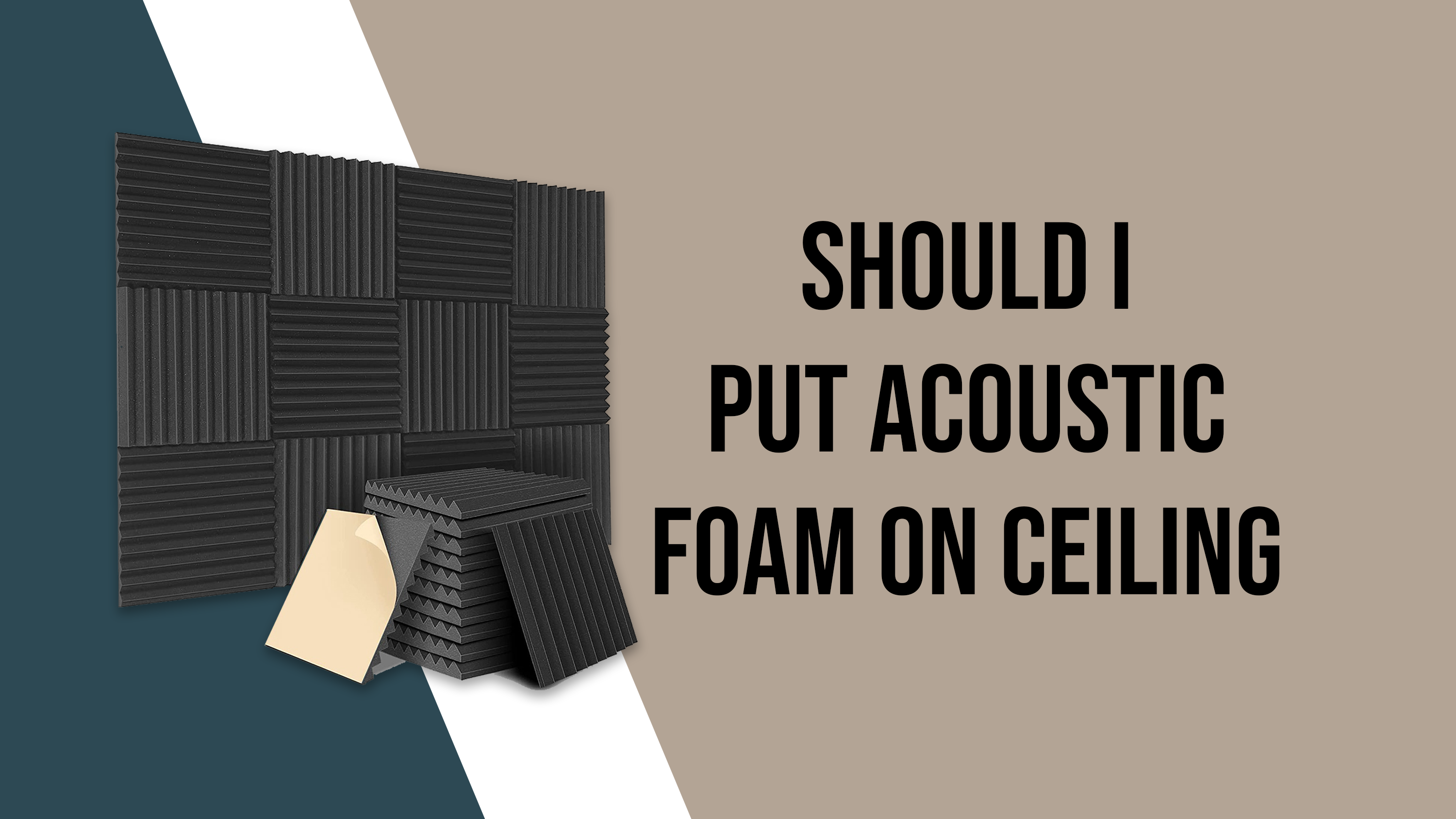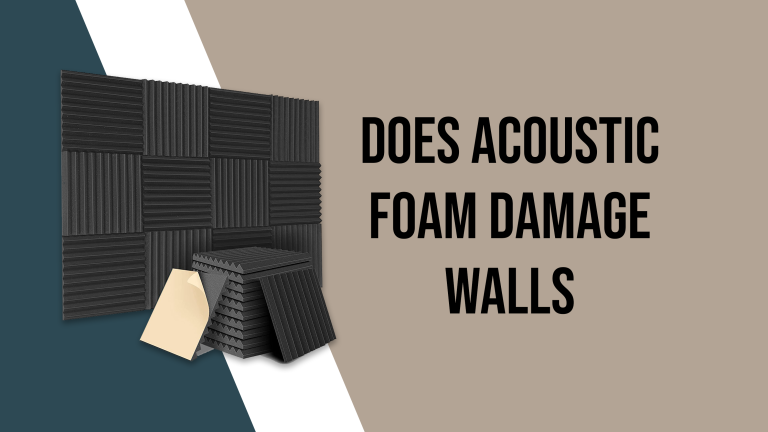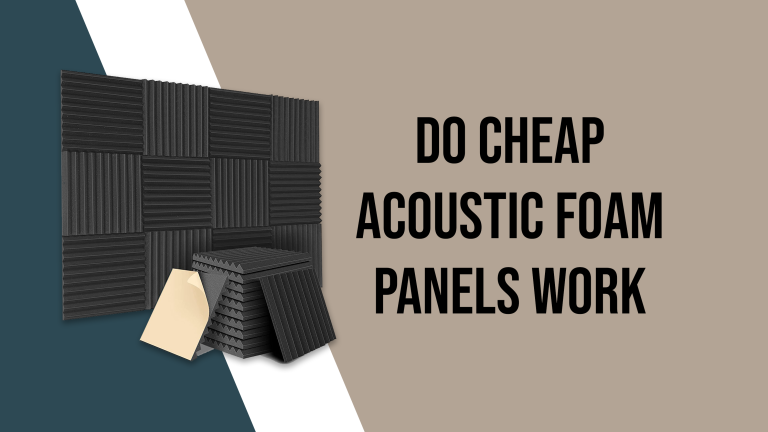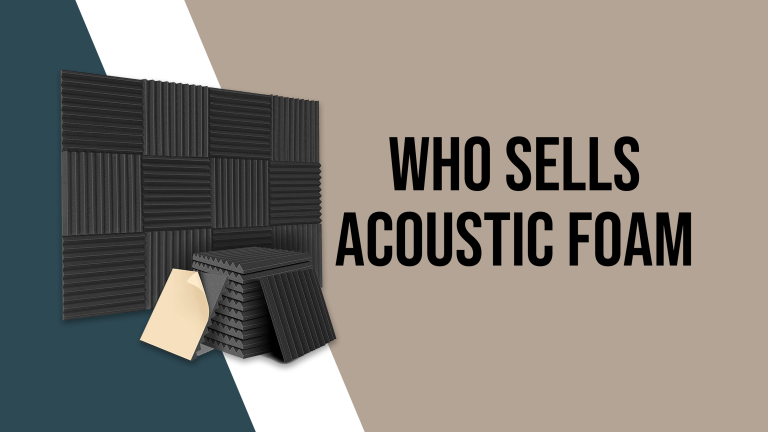Should I Put Acoustic Foam On Ceiling?
Acoustic foam is a popular material used for soundproofing and sound absorption in a variety of settings, including homes, offices, and studios. It is typically used to improve the overall sound quality of a space by reducing echo and reverberation.
One question that often arises is whether it is a good idea to use acoustic foam on the ceiling. In this article, we will examine the pros and cons of using acoustic foam on the ceiling and provide some guidance on how to determine whether it is the right solution for your needs.
Read: Can Command Strips Work on Acoustic Foam? & Is Acoustic Foam Safe.
Keep reading!
Should I Put Acoustic Foam On Ceiling?
If you are not sure whether using acoustic foam on the ceiling is the right solution for your needs, it is a good idea to consult with a professional acoustician or audio engineer.
What is Acoustic Foam?
Acoustic foam is a type of porous, open-cell foam that is designed to absorb sound waves. It works by converting sound energy into heat energy through a process called viscous dissipation.
When sound waves hit the surface of the foam, they cause the foam to vibrate, which generates heat and dissipates the sound energy.
The effectiveness of acoustic foam is measured in terms of its noise reduction coefficient (NRC). The NRC is a rating that ranges from 0 to 1 and indicates the foam’s ability to absorb sound. A foam with an NRC of 1 absorbs all sound, while a foam with an NRC of 0 absorbs no sound. Most acoustic foam has an NRC of around 0.7 to 0.9.
How Does Acoustic Foam Work?
Acoustic foam works on two main principles- diffusion and absorption. By reducing the reflection of sound waves, acoustic foam diffuses and absorbs sound energy.
The porous structure of the acoustic foam traps the sound waves. As the sound waves struggle to travel through the acoustic foam, high friction is created. Friction generates heat and that heat dissipates the sound waves.
That’s how an acoustic foam lining can reduce the reverberation and echo in a room.
How Does Acoustic Foam Work?
Acoustic foam works on two main principles- diffusion and absorption. By reducing the reflection of sound waves, acoustic foam diffuses and absorbs sound energy.
The porous structure of the acoustic foam traps the sound waves. As the sound waves struggle to travel through the acoustic foam, high friction is created. Friction generates heat and that heat dissipates the sound waves.
That’s how an acoustic foam lining can reduce the reverberation and echo in a room.
Pros of Using Acoustic Foam on the Ceiling:
There are several benefits to using acoustic foam on the ceiling:
Improved Sound Quality:
One of the main advantages of using acoustic foam on the ceiling is that it can help to improve the overall sound quality of a space. By reducing echo and reverberation, acoustic foam can make it easier to hear and understand speech and music, and can also make a space feel more comfortable and less “boomy.”
Noise Reduction:
In addition to improving sound quality, acoustic foam can also be effective at reducing unwanted noise. If you have a room with a high ceiling, the sound waves may bounce off the ceiling and create unwanted noise. By absorbing these sound waves, acoustic foam can help to reduce the amount of noise in the room.
Easy to Install:
Another benefit of acoustic foam is that it is relatively easy to install. It can be cut to fit any size or shape of ceiling and is typically self-adhesive, making it easy to attach to the ceiling without the need for any special tools or equipment.
Read our articles: How Much Acoustic Foams Do You Need? & Do Cheap Acoustic Foam Panels Work?
Cons of Using Acoustic Foam on the Ceiling:
While there are many advantages to using acoustic foam on the ceiling, there are also some potential drawbacks to consider:
Aesthetics:
Some people may not like the appearance of acoustic foam on the ceiling, as it can be somewhat bulky and may not match the decor of the room. If you are concerned about the appearance of the foam, you may want to consider using a more discreet option, such as an acoustical ceiling tile.
Cost:
Another potential drawback of using acoustic foam on the ceiling is the cost. Depending on the size of the room and the amount of foam you need, the cost of covering the entire ceiling with foam can be quite high.
Limited Effectiveness:
While acoustic foam is effective at reducing echo and reverberation, it is not a completely foolproof solution. It is most effective at absorbing mid- and high-frequency sounds, so it may not be as effective at reducing low-frequency sounds, such as bass.
FAQs
Should I put acoustic panels on the ceiling?
It depends on your specific situation and the specific problems you are trying to solve. Acoustic panels on the ceiling can be effective at reducing echo and improving the overall acoustics of a room, but they may not be necessary or the best solution in all cases.
Should I soundproof my ceiling?
Again, it depends on your specific situation and the specific problems you are trying to solve.
Soundproofing a ceiling can be an effective way to reduce the transmission of noise between floors or to block out external noise, but it may not be necessary or the best solution in all cases.
How important is acoustic treatment on the ceiling?
Answer: The importance of acoustic treatment on the ceiling will depend on the specific acoustical issues you are trying to address and the intended use of the space.
In general, good acoustic treatment can help to improve the overall sound quality and clarity of a space, and can make it more suitable for a variety of different activities.
What is the best way to soundproof a ceiling?
There are several different approaches to soundproofing a ceiling, and the best method will depend on the specific requirements of your situation.
Some common methods for soundproofing a ceiling include adding mass (such as by installing a thicker or denser ceiling material), adding insulation, using decoupling techniques (such as adding an air gap between the ceiling and the floor above), and using sound-absorbing materials.
Where do you put acoustic panels on a ceiling?
Acoustic panels can be placed on the ceiling in a variety of different ways, depending on the specific design of the panels and the intended use of the space. In general, it is common to place panels evenly across the ceiling in a grid pattern, with the panels overlapping slightly to ensure coverage. The panels should be positioned so that they are facing down towards the room, in order to effectively absorb sound.
Where should I place acoustic foam panels?
Acoustic foam panels can be placed on a ceiling in a similar manner to other types of acoustic panels. In general, it is common to place the panels evenly across the ceiling in a grid pattern, with the panels overlapping slightly to ensure coverage. The panels should be positioned so that they are facing down towards the room, in order to effectively absorb sound.
Final Words
In conclusion, using acoustic foam on the ceiling can be an effective way to improve the overall sound quality of a space and reduce echo and reverberation. It is relatively easy to install and can be effective at reducing mid- and high-frequency sounds. However, it is important to consider the potential drawbacks of using acoustic foam, including its appearance, cost, and limited effectiveness at reducing low-frequency sounds. If you are unsure whether using acoustic foam on the ceiling is the right solution for your needs, it is a good idea to consult with a professional acoustician or audio engineer for advice and guidance.






